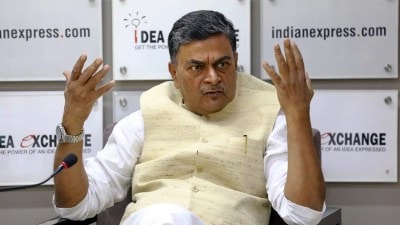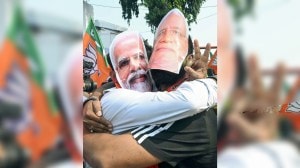Karnataka menstrual leave: Gynaecologists say being active during periods is good for health
Two gynaecologists on myths around menstruation, separating it from endometriosis and why activity and exercise are needed during periods
 Does going to an elite college then guarantee success?
Does going to an elite college then guarantee success?“I have not taken any period leave, and as a gynaecologist, I have a mostly standing physical job, as do most of the nursing staff and healthcare professionals in this department. I can say that staying active during periods has helped me manage cramps and that I have been most productive during my periods too. We never stop delivering babies on the heavy flow days. It is, in fact, perfectly normal to be active on such days,” says Dr Shafalika S B, consultant, Minimally Invasive Gynaecology, Manipal Hospital, Bengaluru.
In Delhi, Dr Neelam Suri, senior consultant, Obstetrics and Gynaecology, Indraprastha Apollo Hospitals, Delhi, says, “I have been working for 35 years during my periods and have had no health problems doing so. Just drink fluids, maintain menstrual hygiene and be active. As doctors, we have to be available 24 hours and women gynaecologists have handled both periods and pregnancy in their careers. So have our nurses.”
While the Karnataka government has announced a one-day paid menstrual leave for women every month, amounting to 12 paid leaves for them a year, many women professionals are saying such categorisation further stigmatises what is a natural biological occurrence and raises questions about their physical wellbeing vis-à-vis their male counterparts.
What’s the current discomfort status of women in the menstrual age?
“If anything, such a concession could be misused because 80 to 90 per cent of women can go through period pain unless they are diagnosed with conditions like endometriosis, where tissue similar to the inner lining of the uterus grows outside the uterus. In most cases, physiological pain associated with normal periods lasts for a couple of years and can be medically managed with a pill. Less than one per cent of women take leave on heavy flow days. In India, 10 per cent of women in the reproductive group have endometriosis,” says Dr Shafalika.
What are the conditions that are painful for women?
Apart from endometriosis, excruciating pain can happen in adenomyosis, a condition that causes endometrial tissue in the lining of the uterus to grow into the muscular wall of the uterus. It enlarges the uterus, and may lead to very heavy menstrual bleeding. “This condition affects around five per cent of women. Endometriosis can start at a person’s first menstrual period and last until menopause. Heavy periods, the kind that drains you of too much blood and may make you anaemic, can happen when you have hormonal imbalances, triggered by obesity, insulin resistance, thyroid problems and polycystic ovary syndrome (PCOS). They can also happen when you have growths like fibroids and cysts. Sometimes medications for other health conditions can play a part,” says Dr Shafalika.
These conditions need sustained treatment and management. “Where a condition is indicated, a day leave is not sufficient, where it is not indicated, a leave is not needed,” she says.
What are common myths around periods?
Some women worry that they get periods twice a month. “But you can get them because a normal menstrual cycle can begin between the 22nd and 28th day after the last cycle. So would you give them two days off?,” asks Dr Suri.
Although pain is relative, Dr Suri says women professionals in their productive years have fairly normal cycles. “Most irregularities and pain of menstrual cycles usually settle by mid-20s. Usually, a stable pattern emerges after 30, when women are on the cusp of their most productive years,” says Dr Suri.
But the biggest myth around periods is that women cannot do physical activity or exercise. “When you are physically active, more blood circulates in the body, your muscles are working, both of which release endorphins, which are natural pain killers. Your mind is diverted and positive. If you are used to your workouts, continue them. If you have heavy bleeding on the first or second day, do not lift weights. Just change the style of exercise that day,” adds Dr Suri.



- 01
- 02
- 03
- 04
- 05




























